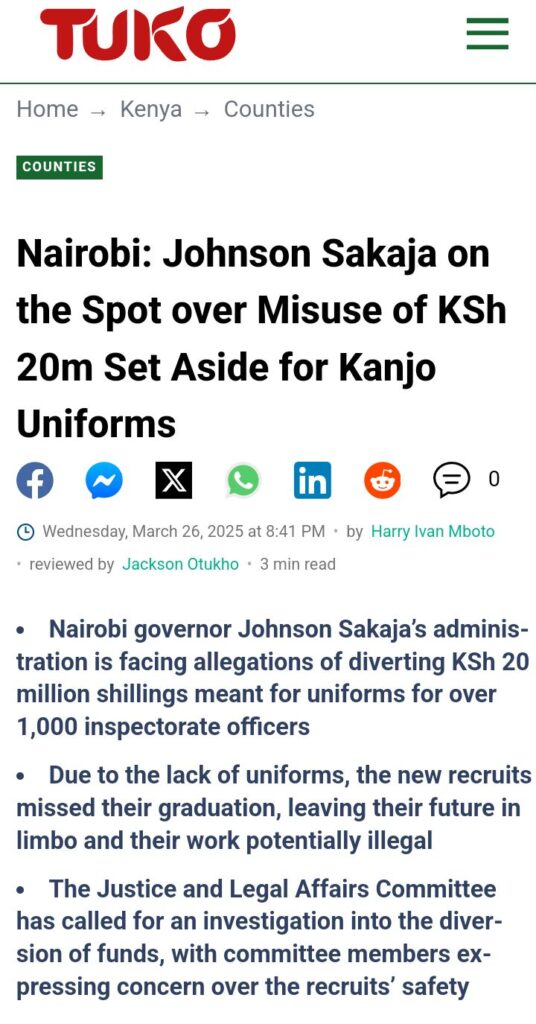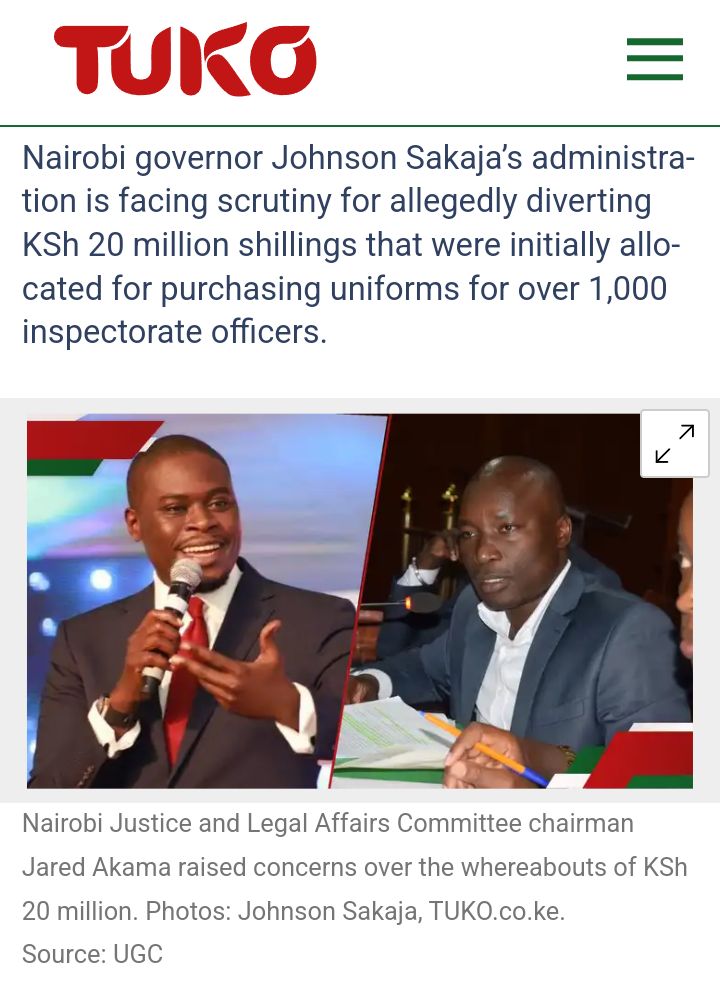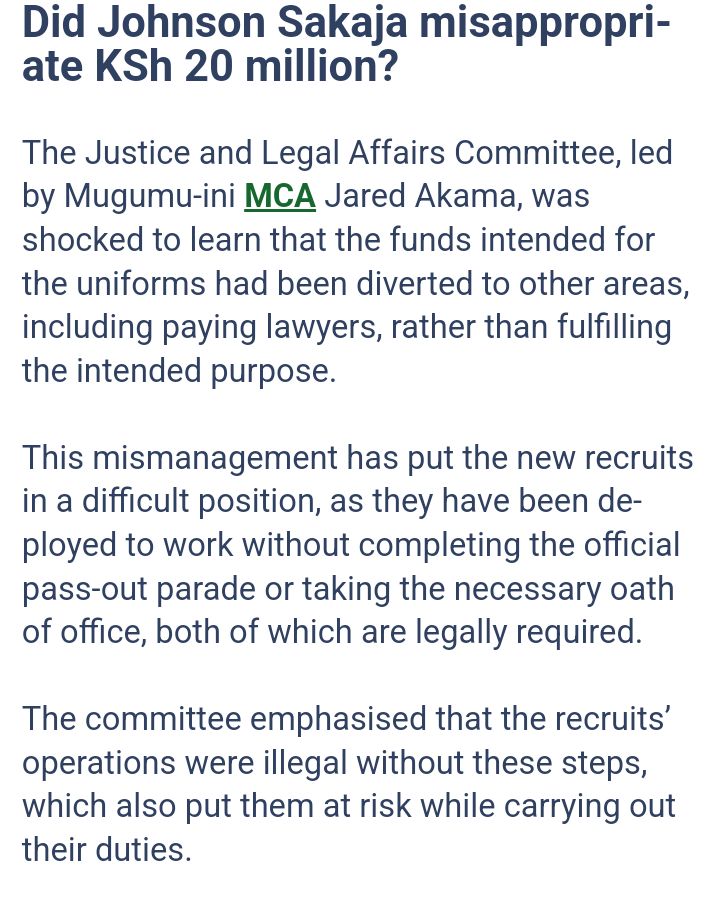According to the report shared by Tuko news, Johnson Sakaja’s leadership in Nairobi continues to be marred by controversy, with the latest scandal involving the alleged misuse of KSh 20 million meant for inspectorate officers’ uniforms. This incident exposes yet another failure in his administration, highlighting a pattern of mismanagement and misplaced priorities that have left Nairobians frustrated.
The funds were allocated to provide uniforms for over 1,000 new recruits, ensuring they could complete their training and legally assume their duties.
However, instead of being used as intended, the money was reportedly diverted to other areas, including paying lawyers. As a result, the recruits could not graduate, leaving them in limbo and putting their employment status into question.
This blatant misuse of funds raises serious questions about the governor’s commitment to transparency and proper governance. Under Sakaja’s watch, Nairobi has faced numerous financial scandals, with money meant for essential services disappearing into questionable expenditures.

The Justice and Legal Affairs Committee has now been forced to step in, demanding accountability for the missing KSh 20 million. Mugumu-ini MCA Jared Akama, who chairs the committee, expressed outrage over the mismanagement, emphasizing that the recruits’ deployment without proper certification is illegal.
Without graduation and the necessary oath-taking, these officers are not only unqualified to serve but also at risk of legal challenges in their work.
The City Inspectorate’s head of operations, Benjamin Omondi, confirmed that the funds were indeed available but were redirected elsewhere. This revelation only deepens the public’s concerns over Sakaja’s leadership, as it suggests deliberate financial mismanagement.
Omondi further stated that the governor’s office has been uncooperative, making it difficult to resolve the issue. Meanwhile, the affected recruits remain uncertain about their future, unsure whether they will ever receive their uniforms or be officially recognized as officers.
This negligence has demoralized many who joined the inspectorate service with hopes of building careers in law enforcement.This is not the first time Sakaja’s administration has come under fire for financial mismanagement.

The Dishi na County school feeding program, which was meant to provide meals for children, also faced scrutiny when KSh 140 million from the French government was allegedly redirected to an implementer’s account without clear accountability.
Health CEC Susan Silantoi was unable to provide a proper breakdown of the funds, leading to suspicions that money meant to feed schoolchildren may not have been used appropriately. The lack of transparency in handling public funds has been a recurring issue in Sakaja’s leadership, painting a picture of a governor more focused on publicity stunts than actual service delivery.
Beyond financial scandals, Nairobi’s state under Sakaja has been deteriorating. Basic services such as garbage collection, road maintenance, and drainage systems remain in poor condition despite the county collecting billions in revenue.
City residents have continued to voice their frustrations, questioning why essential services remain substandard when funds are available. The streets of Nairobi are filled with uncollected garbage, roads are full of potholes, and water shortages have become a norm. These issues indicate an administration that is failing at the most basic responsibilities while public funds are mismanaged with little accountability.
Sakaja’s leadership style has also been criticized for being more about optics than substance. While he often appears in media interviews and social events, his track record on actual governance tells a different story. The scandals surrounding his administration reflect an inability to manage Nairobi’s resources effectively, leaving citizens to suffer the consequences. Instead of focusing on improving city services and ensuring that funds are used for their intended purposes, Sakaja’s government seems more interested in finding ways to justify questionable expenditures.
With Nairobi sinking deeper into chaos under his leadership, it is becoming clear that Sakaja is not the leader the city needs. His administration has been marked by empty promises, poor planning, and financial scandals that continue to erode public trust.

If the alleged misuse of KSh 20 million for inspectorate uniforms is anything to go by, it is just another sign that Nairobi’s leadership is failing at its core responsibilities. Without urgent intervention, the capital will continue to struggle under the weight of mismanagement, leaving residents to bear the burden of a dysfunctional government.





















Add Comment